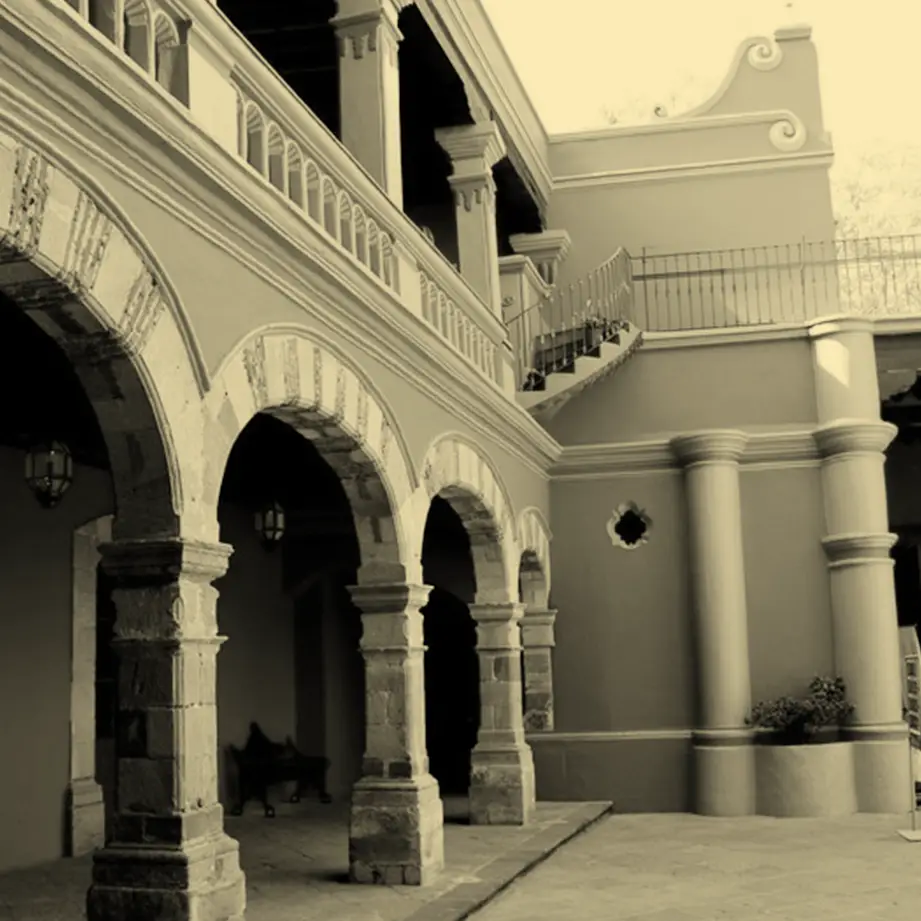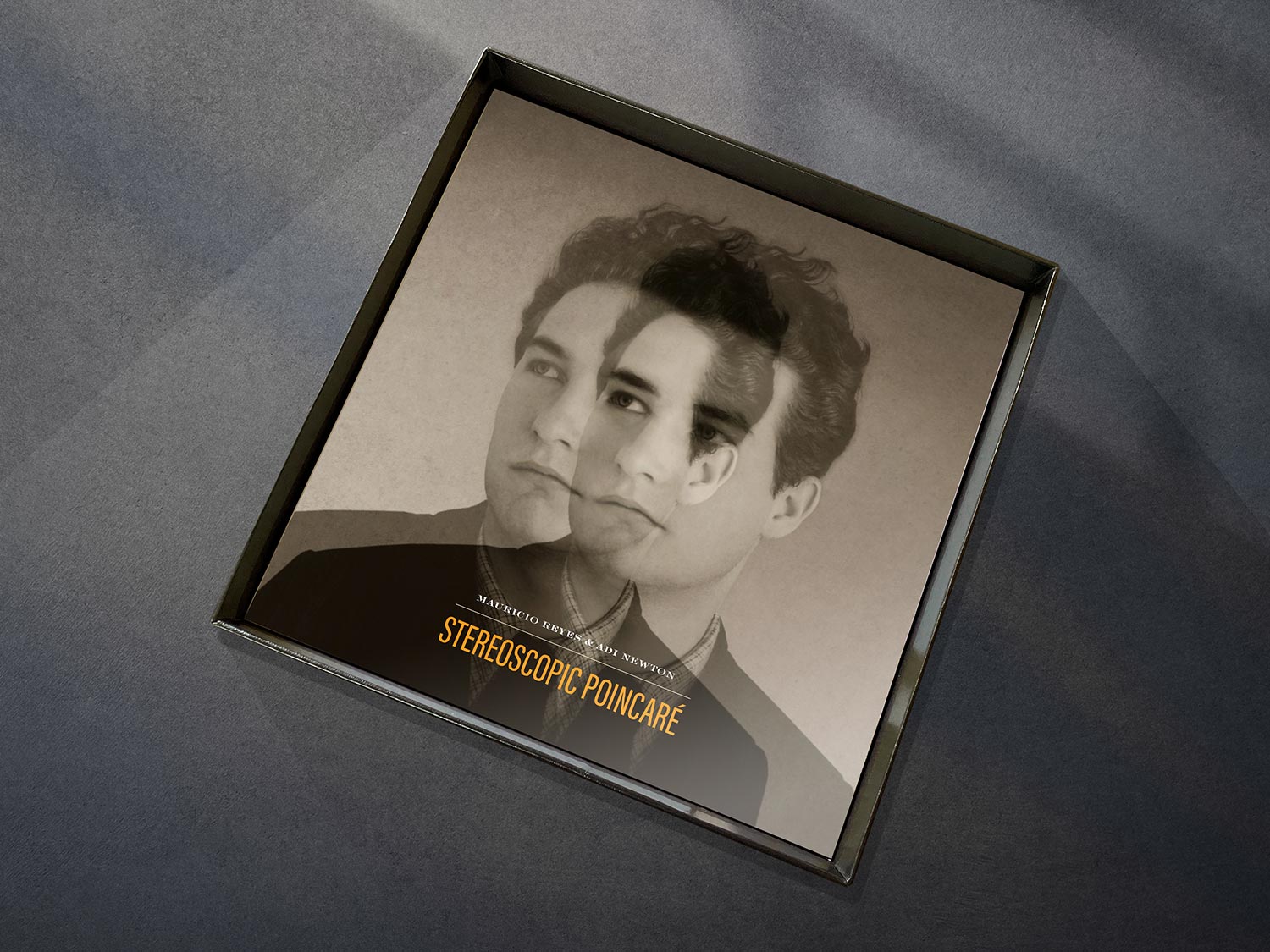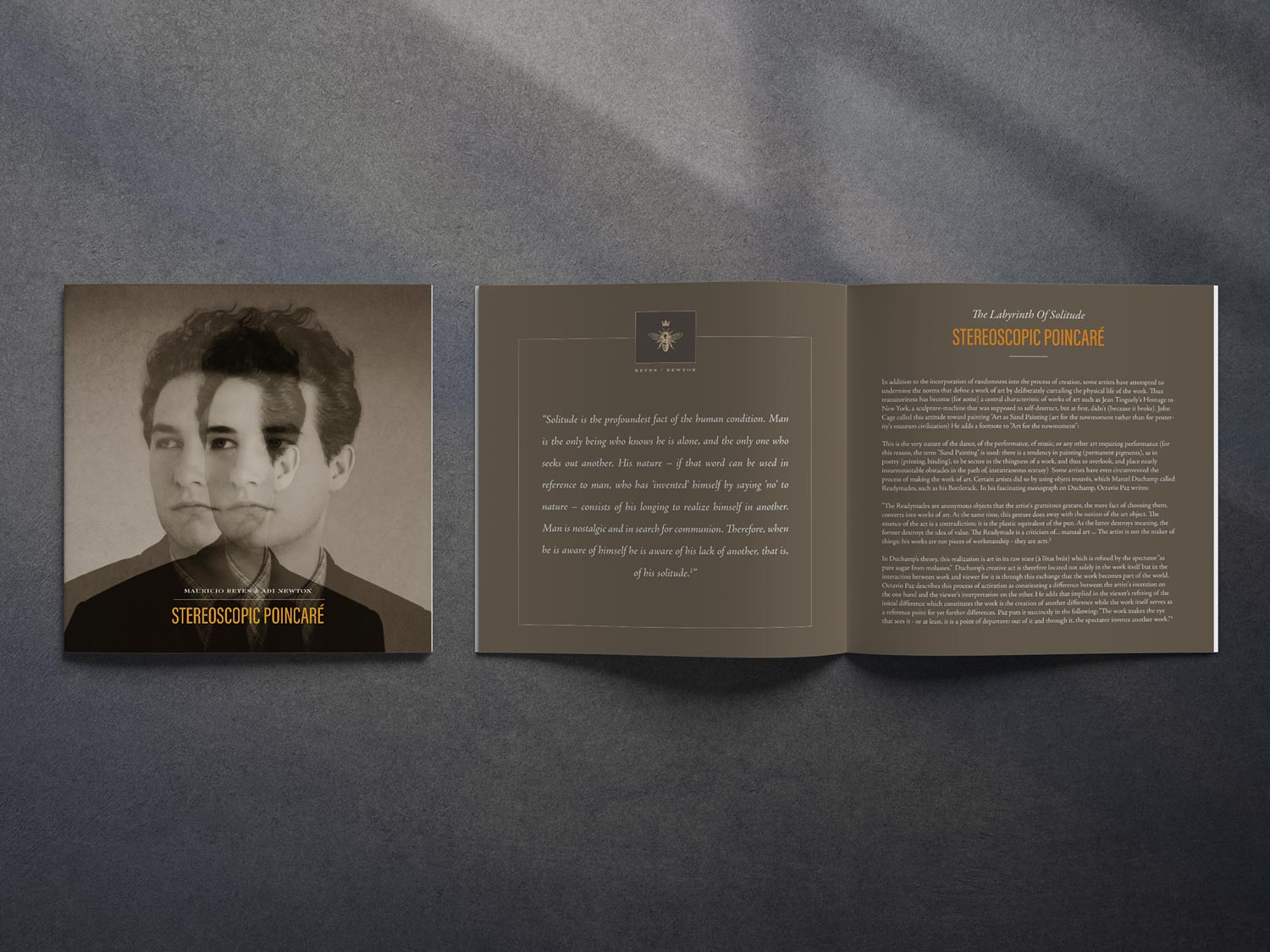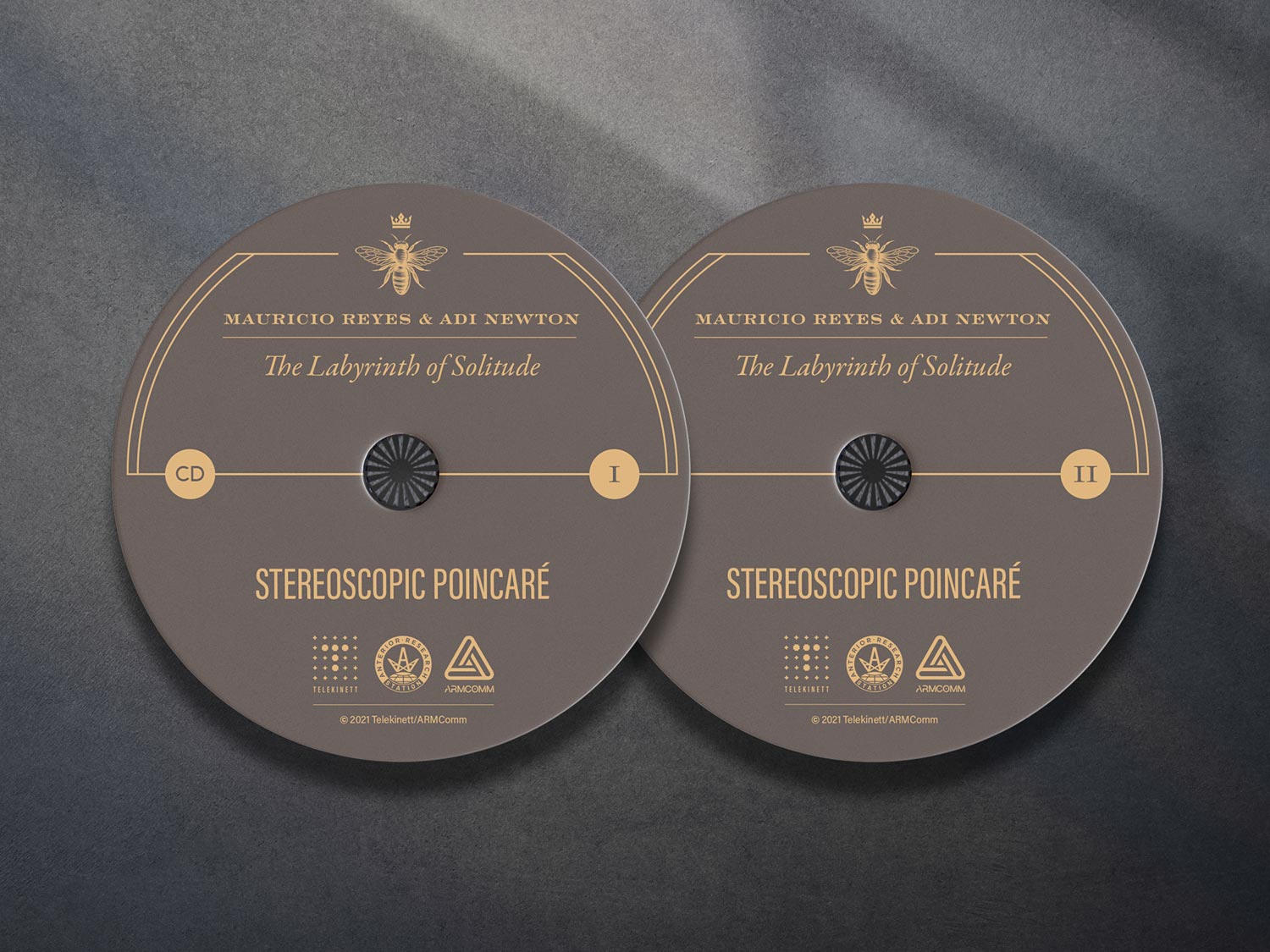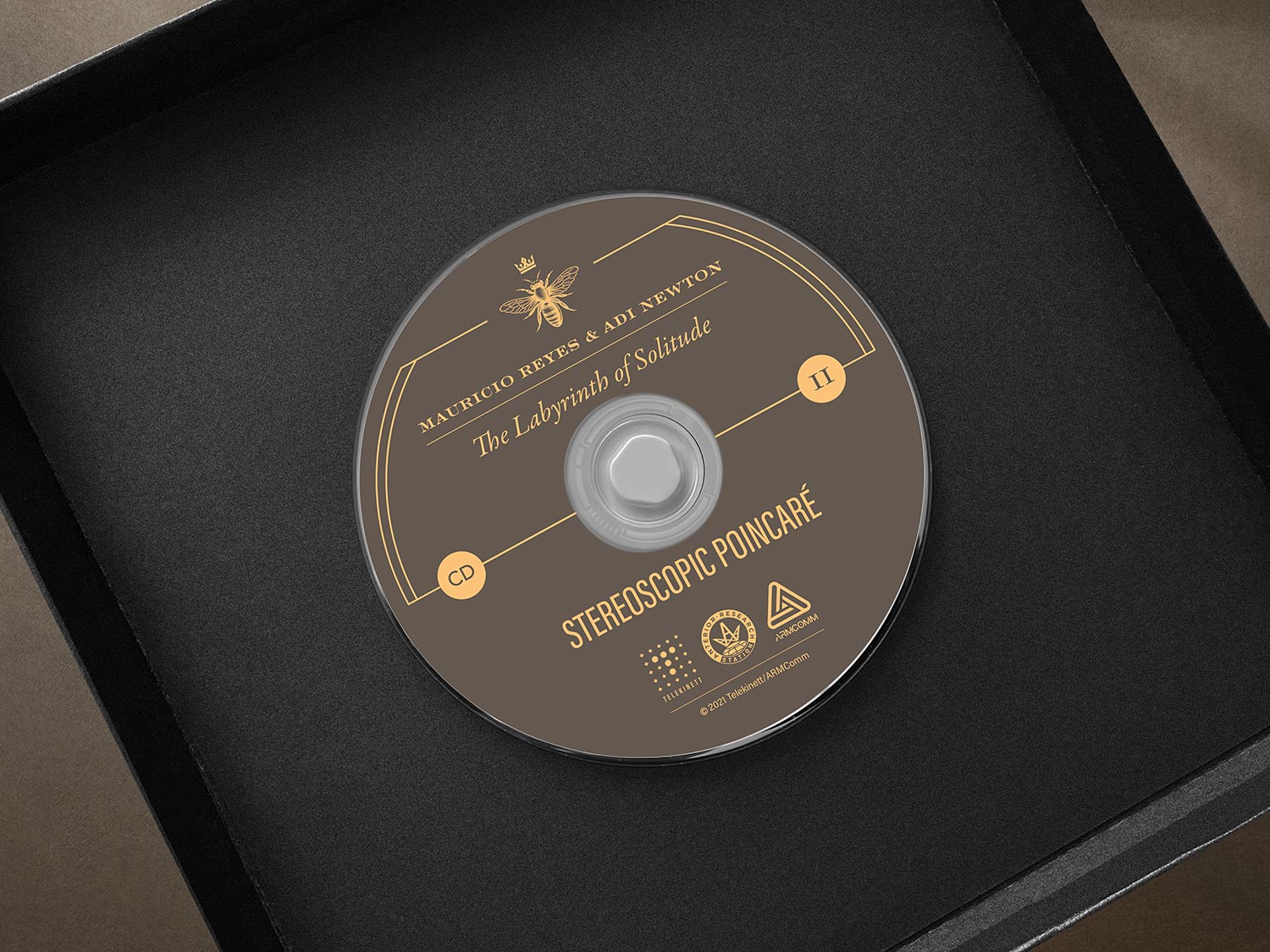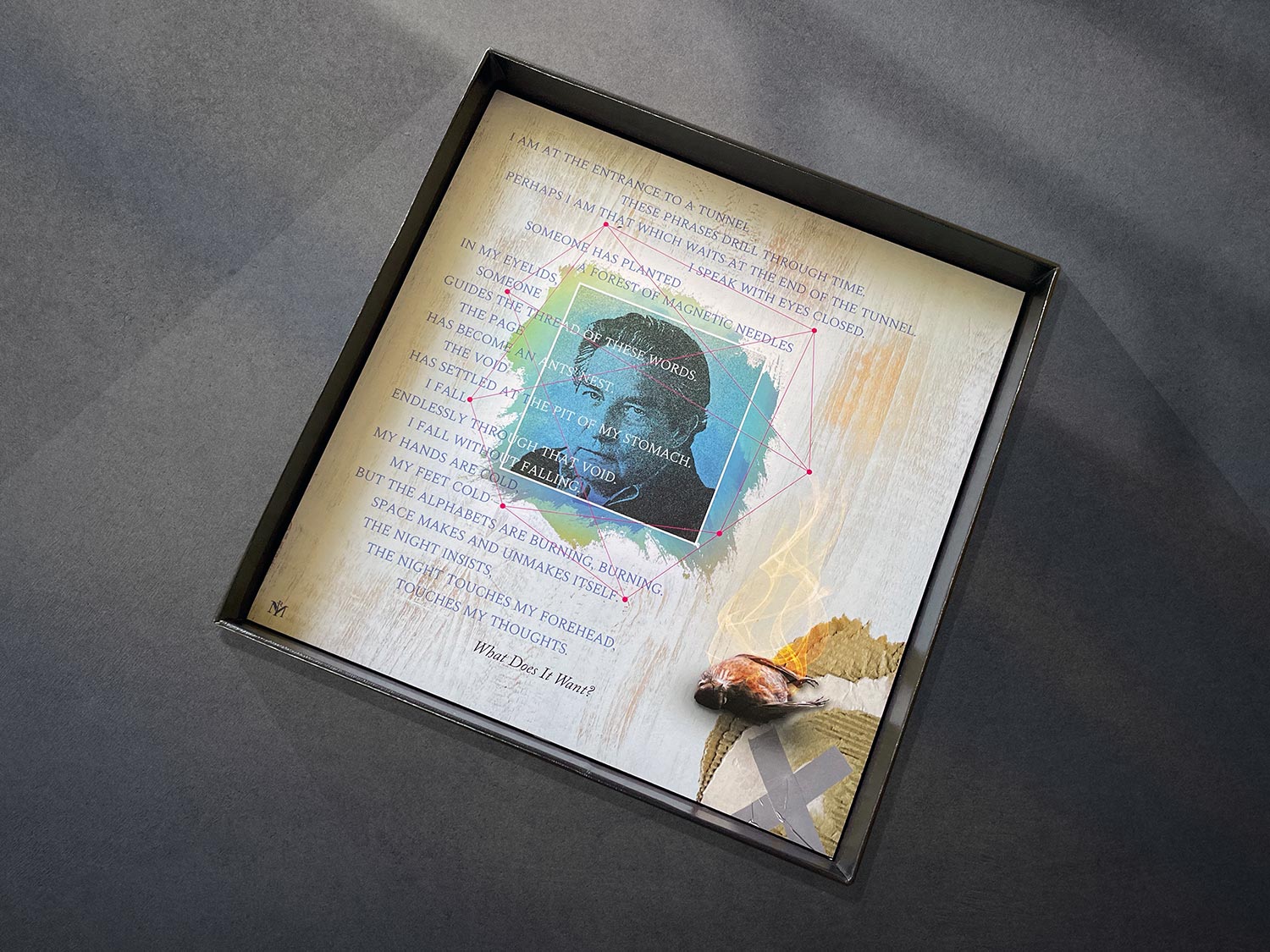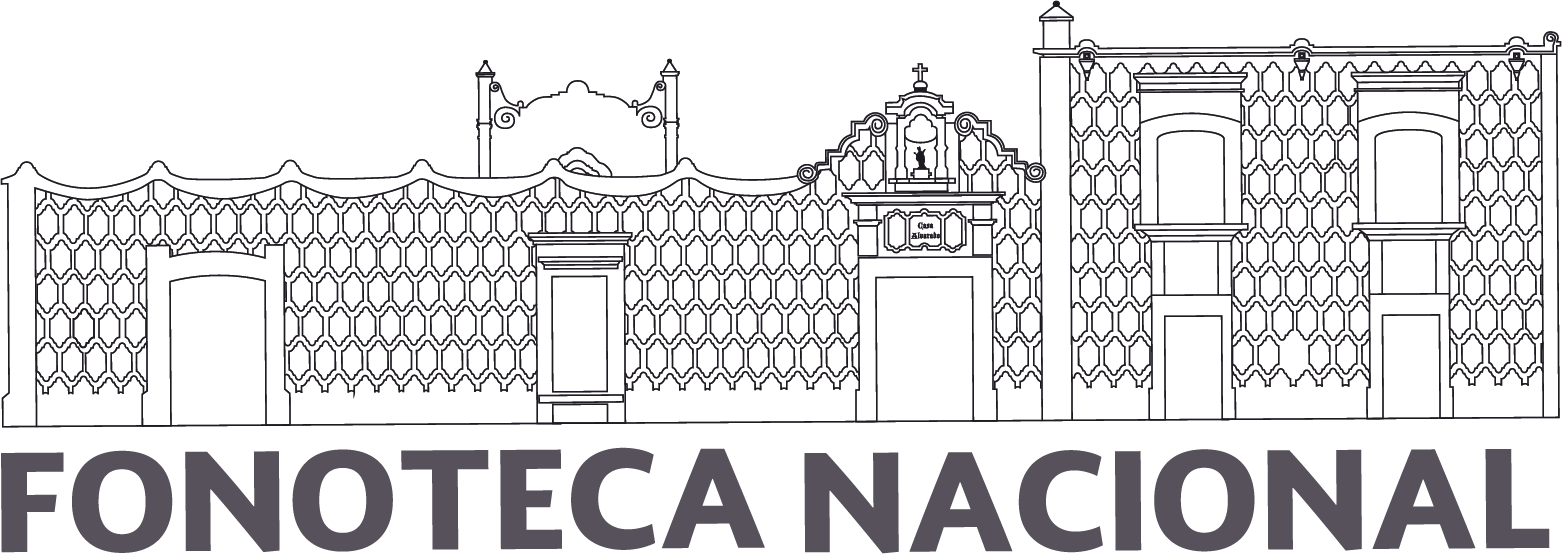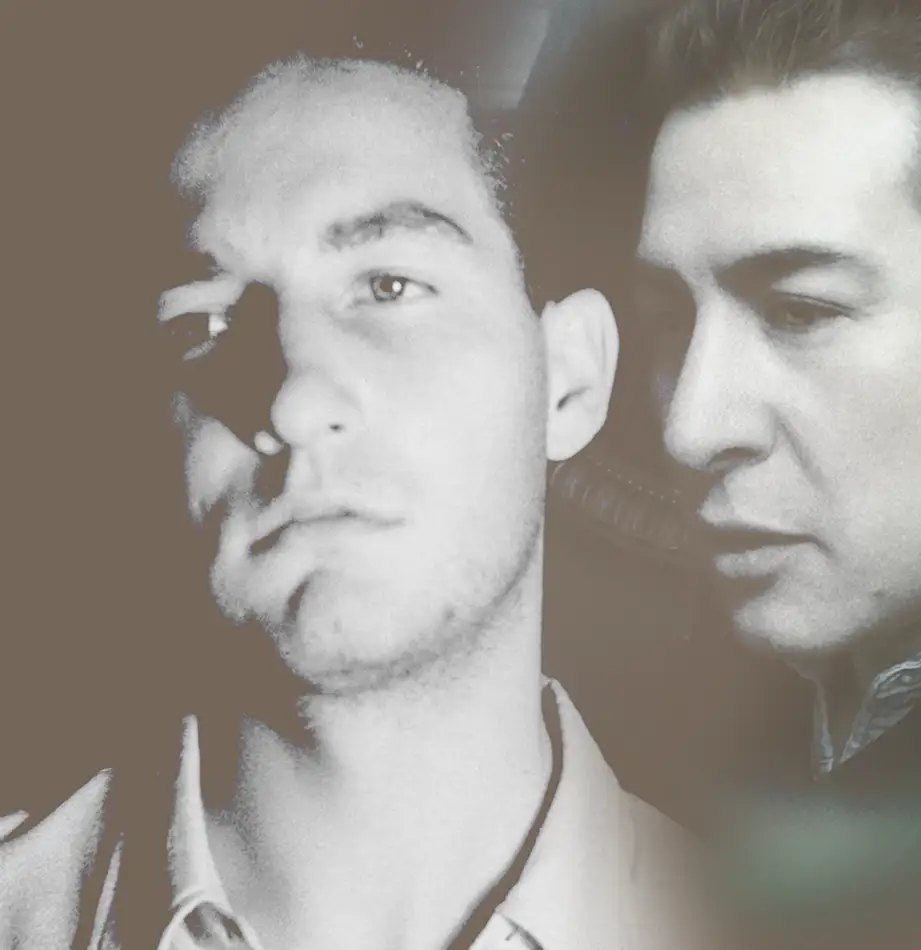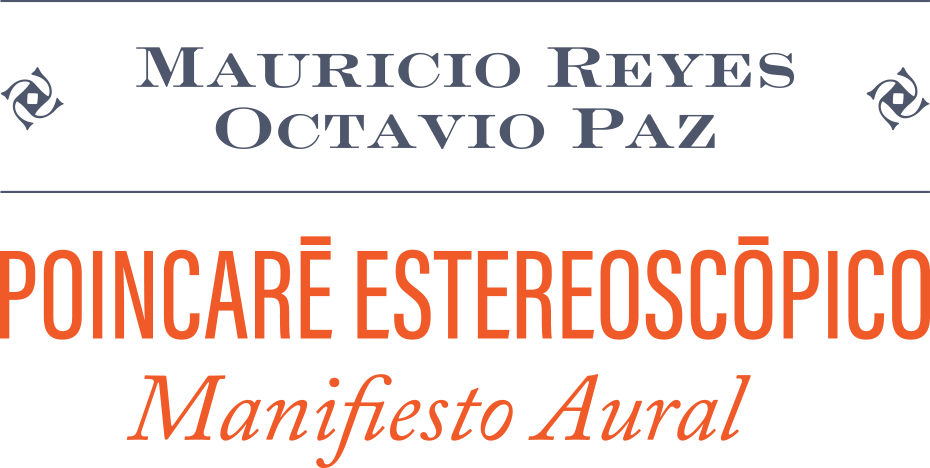

Telekinett and the Fonoteca Nacional De México Present:
Stereoscopic Poincaré

Aural Manifesto
Stereoscopic Poincaré. An Electroacoustic work by Mauricio Reyes based on the poetry of Octavio Paz.
October 18, 2024 – 7:pm
Fonoteca Nacional
Francisco Sosa 383, Barrio de Santa Catarina, Coyoacán, Ciudad de México, 04010 México
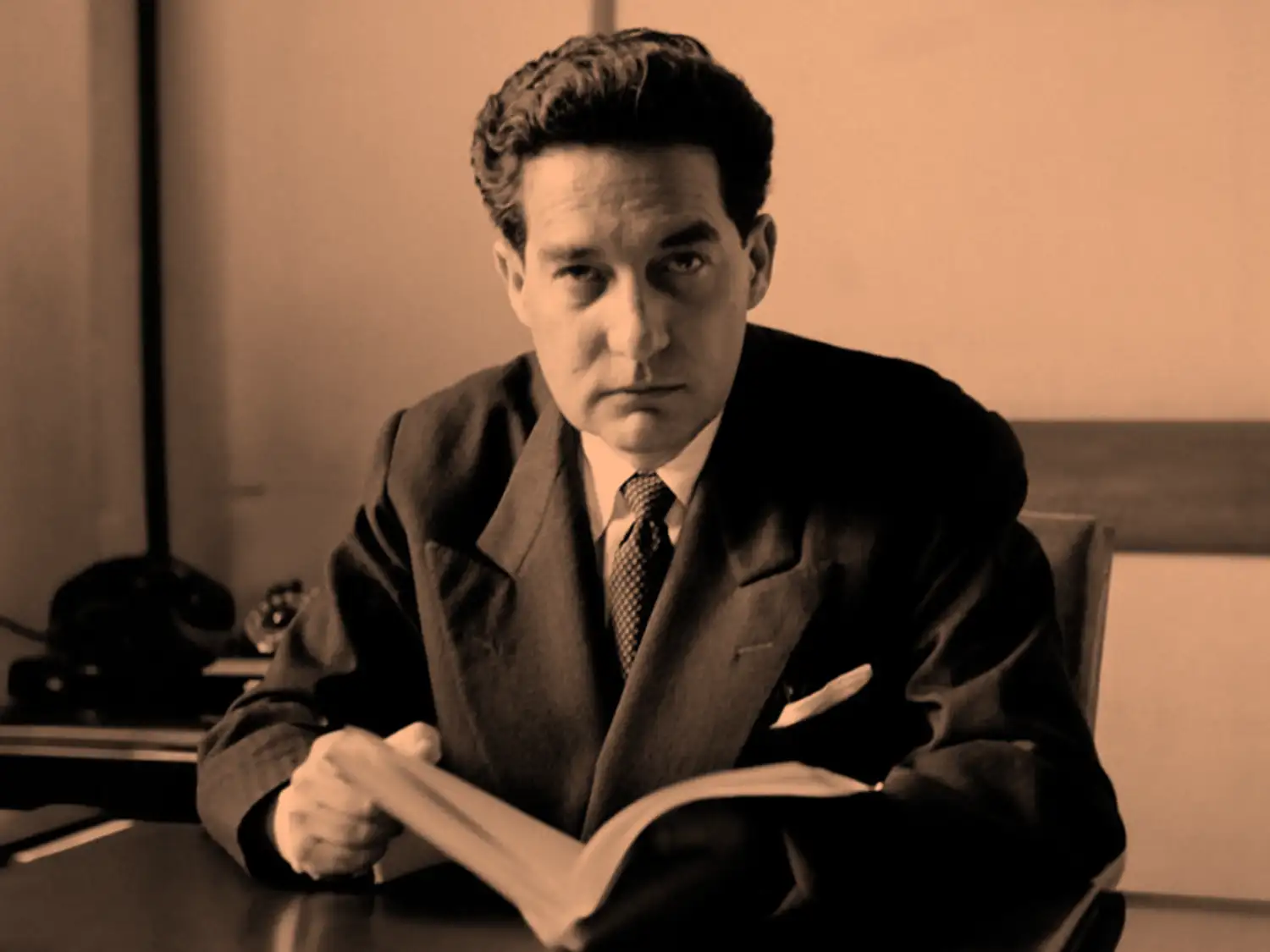
First Act
Video presentation and lecture on the tapes recorded by Octavio Paz at the Library of Congress in Washington DC in 1961 and their history.

Second Act
Exhibition of the live musical work and presentation in Mexico of the artistic movement “Electroacoustic Abstractionism” created by Maestro Reyes.
Sinopsis
Synopsis
The work Stereoscopic Poincaré is based on the composition “Love Letter for Duchamp” by Mauricio Reyes, created in 2006. The work is structured similarly to Guillaume Apollinaire’s calligrams, in multiple levels. Thirty poems, among more than one hundred, were selected to create Stereoscopic Poincaré. During the main passage, a verse that repeats in 10-second intervals is the spine of the work.
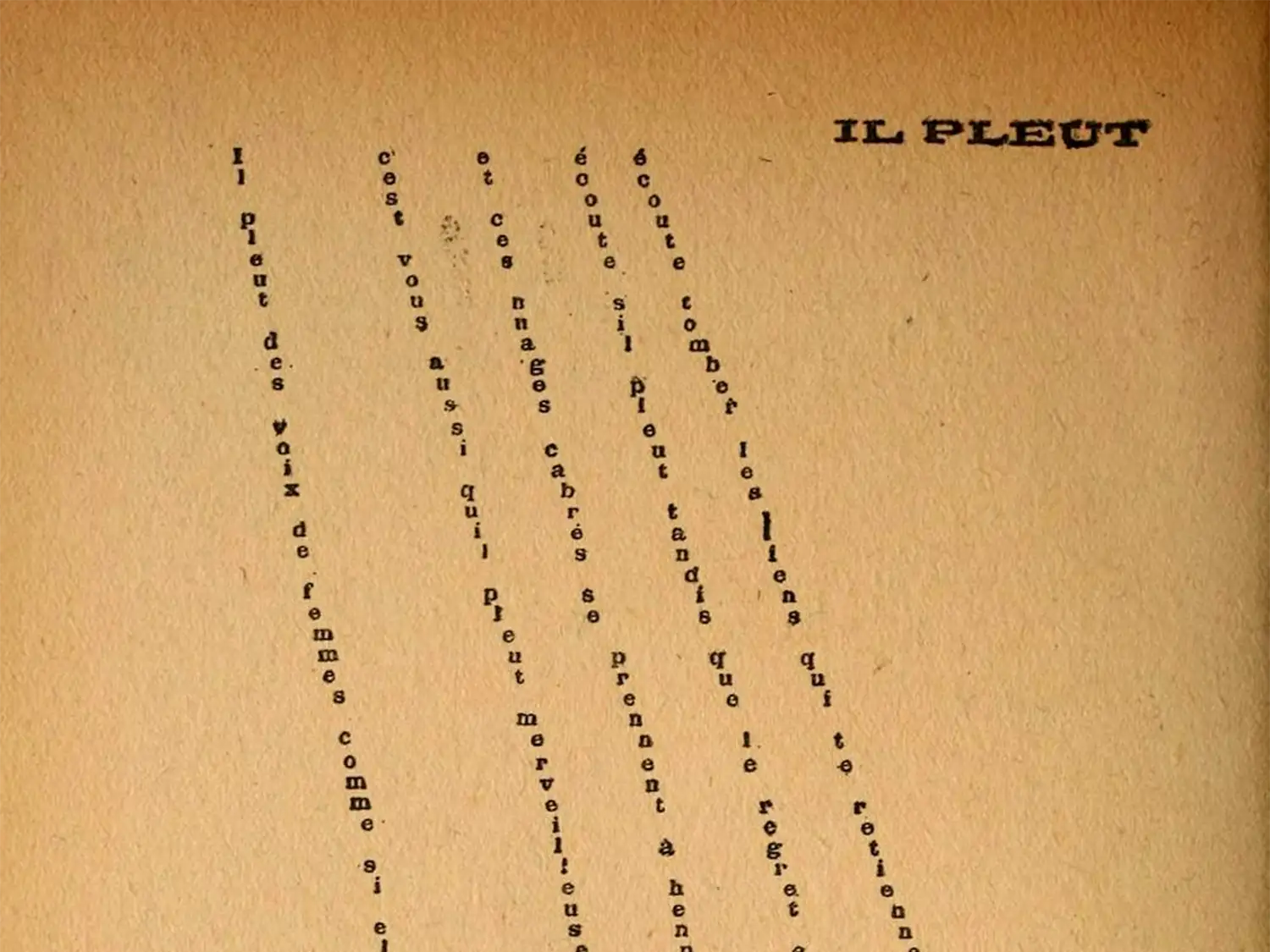
Guillaume Apollinaire – “It Rains”
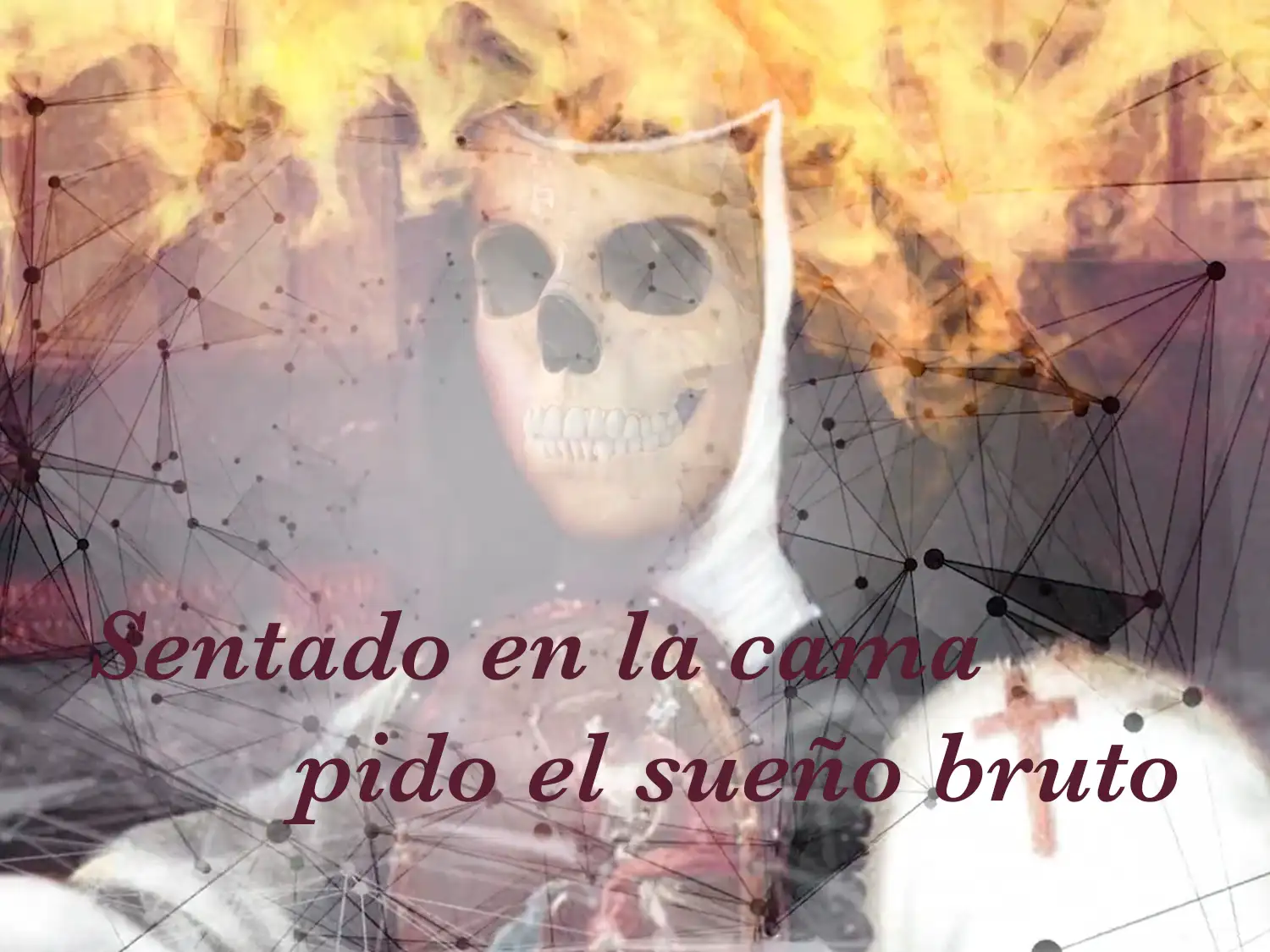
Octavio Paz – Thrown in Bed
In 1989, during a brief encounter with Octavio Paz, Mauricio Reyes inquired about the poet’s fascination with the concept of solitude. Reyes also noticed a small bee-shaped pin that Paz was wearing, which caught his attention. In response, Paz stated “There is no such thing as returning home once you have left it. Men are like bees. The bee is the living representation of solitude, it is perhaps the only being that lives, grows, and produces without questioning its labor. It is a social outcast with a tremendous knowledge of its purpose in life. It is a being who lives, among many others, in a solitary world.” These profound words from Paz, along with Sor Juana Inés de la Cruz’s poem “First Dream,” served as the inspiration for the creation of Stereoscopic Poincaré. The term “stereoscopic” refers to the illusion of depth in an image, achieved through various techniques of recording visual information in a three-dimensional format. Mauricio Reyes also associates it with the elusive object that Marcel Duchamp, the father of conceptual art, sought throughout his life. Duchamp’s fascination with the relationship between the second and third dimensions led him to explore stereoscopy from the early stages of his artistic career. Octavio Paz recognized the presence of the stereoscopic metaphor in Duchamp’s works, such as “El Gran Vidrio” and “Etant Donnés.”
Octavio Paz postulates that loneliness is responsible for people’s perspective on death, celebration, and identity. While it is undeniable that death in Mexico is celebrated, it is at the same time feared because of the uncertainty involved.

Mauricio Reyes
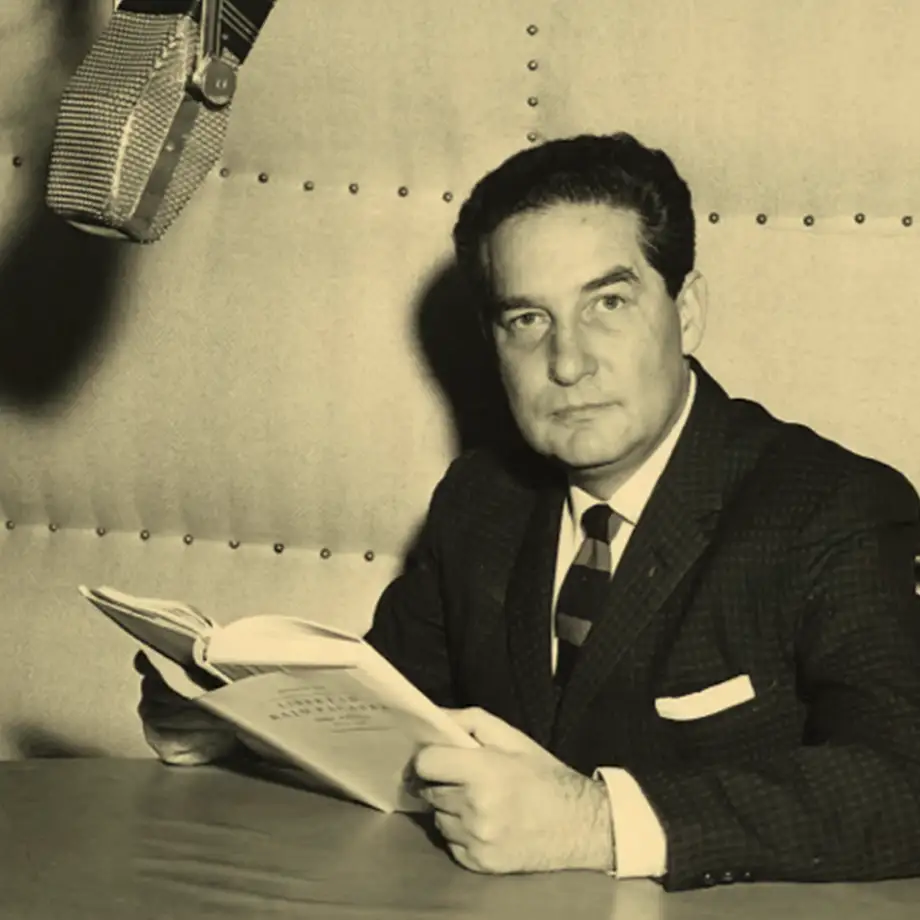
Octavio Paz

Marcel Duchamp
Mauricio Reyes is the creator of the artistic movement Electroacoustic Abstractionism, a movement in which the works of art are not reduced only to the field of hearing. It is a multidimensional and multi-experiential process to connect the viewer, the environment, and any of his artworks. This artistic movement will be presented for the first time in Mexico during this recital.
Stereoscopic Poincaré is a musical and conceptual work that explores the loss of identity, the incessant search to belong somewhere, to be loved and needed. The loneliness that arises from this search has been translated into music that is beautiful and cerebral, as well as sharp and violent.
Stereoscopic Poincaré: Aural Manifesto
Stereoscopic Poincaré: Aural Manifesto
Program
Movement I – Birth
Movement II – My Mother
Movement III – Leaving Home
Movement IV – Violent Poetry
Movement V – Conversations With God
Program
Movement I
Birth
Movement II
My Mother
Movement III
Leaving Home
Movement IV
Violent Poetry
Movement V
Conversations With God
The Fonoteca Nacional de México
Is in charge of researching, recording, preserving and disseminating Mexico’s sound heritage, derived both from live experiences and from the phonographic and radiophonic tradition.
Mission
To safeguard the country’s sound heritage through the implementation of methods of collection, conservation, preservation, access, and knowledge of the collection, in accordance with international standards, to give researchers, teachers, students, and the general public access to Mexico’s sound heritage; likewise, to carry out artistic, academic, cultural and recreational activities related to sound in order to promote a culture of listening.
Vision
Consolidate the Fonoteca Nacional as a leading and service institution at a national level and with international recognition in the preservation of sound heritage. To guarantee the preservation of Mexico’s sound heritage and public access to it with national coverage.
The Casa de Alvarado in Coyoacán

Casa Alvarado, an 18th-century building, owes its name to a legend that tells that the conquistador Pedro de Alvarado lived there. The reality is that its former owner, the American archaeologist Zelia Nuttall, was the one who, without historical testimony to prove it, allowed the legend of the 18th-century estate, today, the National Fonoteca houses of the Sounds of México.
“If after my death you want to write my biography, nothing could be simpler: write down two dates, birth, and death. Every day in between belongs to me.…”
TELEKINETT PROUDLY PRESENTS POEMS BY OCTAVIO PAZ, WINNER OF THE 1990 NOBEL PRIZE FOR LITERATURE. WORKS BY THE POET PRESENTED FOR THE FIRST TIME SINCE THEIR CREATION ON MARCH 23 AND 24, 1961 AT THE MAGNETIC RECORDING LABORATORY OF THE LIBRARY OF CONGRESS IN WASHINGTON, D.C.
Stereoscopic Phrases
Stereoscopic Phrases
The purpose of this work is to give a third dimension to the written word by creating three-dimensional concrete poetry.
Catalog
Title
Mexican poet and essayist Octavio Paz reading from his work
Summary
Mr. Paz reads from his following works: “Aguila o sol?”, “Semillas para un himno,” “Salamandra,” and “Piedra del sol.”
Names
Paz, Octavio, 1914-1998
Archive of Hispanic Literature on Tape (Library of Congress)
Created / Published
1961.
Contents
From book “¿Aguila o sol?” : “Trabajos del poeta” (min. 00:03) — From book “Semillas para un himno” : “Al alba busca su nombre lo naciente” (min. 37:56); “Fábula” (min. 38:55); “Cerro de la estrella” (min. 40:36); “Día” (min. 42:37); “Piedra nativa” (min. 44:32); “Primavera y muchacha” (min. 45:31); “Refranes” (min. 46:41) — From book “Salamandra”: “Madrugada” (min. 49:06); “Garabato” (min. 49:32); “El puente” (min. 50:11); “Cosante” (min. 50:54); “Duración” (min. 52:02); “Temporal” (min. 53:50); “Salamandra” (min. 55:35) — From book “Piedra del sol” : “Piedra del sol” (min. 1:02:30).
Technical Data
Notes
– Prose and poems in Spanish.
– Recorded Mar. 23-24, 1961, at the Library of Congress Recording Laboratory, Washington, D.C.
– Recorded for the Archive of Hispanic Literature on Tape.
– Archive of Hisp. Lit. on Tape, p. 375-377.
– Preservation master. Washington, D.C.: Library of Congress Magnetic Recording Laboratory, 1973 or 74. 2 sound tape reels: analog, 7 1/2 ips, full track, mono. ; 10 in.
– Production-level cataloging.
– Also available in digital form on the Library of Congress Web site.
Medium
2 sound tape reels (ca. 97 min.): analog, 7 1/2 ips, full track; 10 in.
Call Number/Physical Location
RAA 42193-42194 (original — not for playback)
LWO 3289 reels 1-2 (preservation master)
Library of Congress Control Number
93842718
Online Format: audio
“Solitude, the feeling and knowledge that one is alone, and excluded from the world, is not an exclusively Mexican characteristic. All men, at some point in their lives, feel lonely. And they are. To live is to separate from what we were to get closer to what we will be in the future. Solitude is the most profound fact of the human condition.”
Octavio Paz


